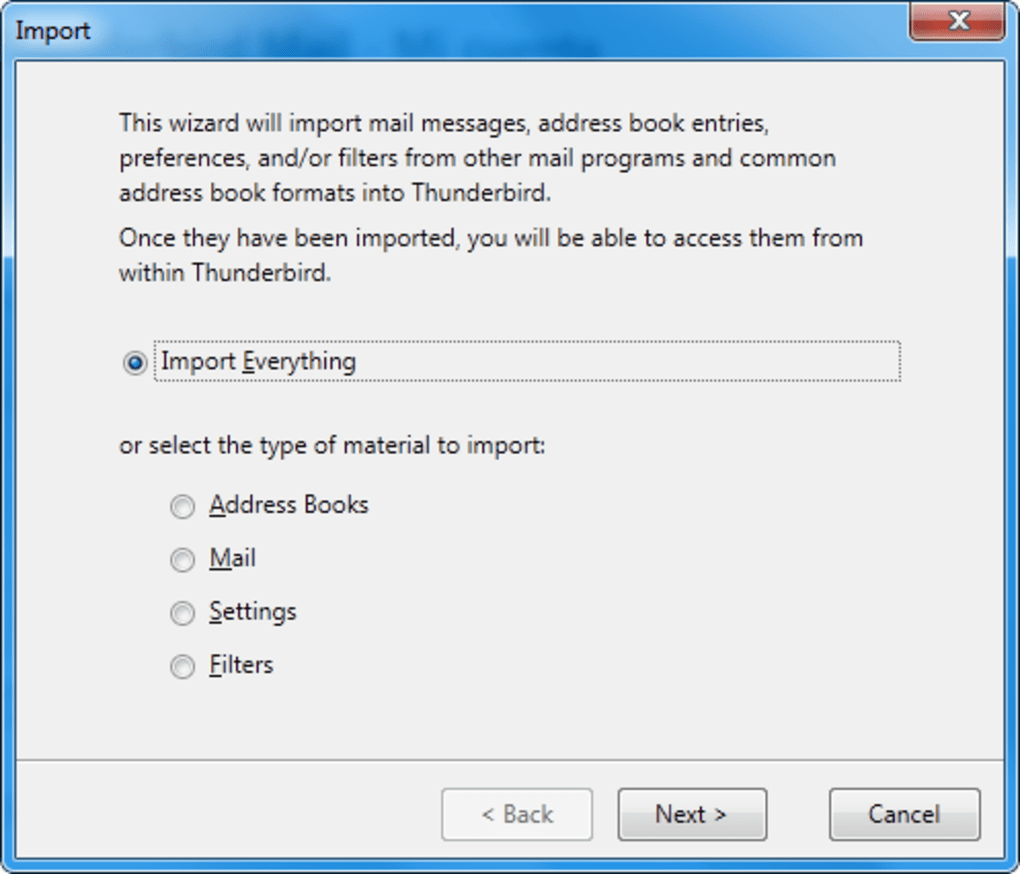

Other methods of finding a profile Searching for a fileĮvery Thunderbird (or SeaMonkey) profile will have an "abook.mab" file, even if you've configured it to store messages outside of the profile. The tilde character (~) refers to the current user's Home folder, so ~/Library is the /Macintosh HD/Users//Library folder. To show hidden files in Nautilus (Gnome desktop's default file browser), choose "View -> Show Hidden Files". However, if you're using a third party build from Debian or Ubuntu, those builds store your profile folder here:īoth are hidden folders.
IS THERE STILL A THUNDERBIRD PORTABLE WINDOWS
The AppData folder is folder is a hidden folder to show hidden folders, open a Windows Explorer window and choose "Organize → Folder and Search Options → Folder Options → View (tab) → Show hidden files and folders". or by using Thunderbird menu path Help->Troubleshooting information->click on the "Show Folder" button. C:\Users\ \AppData\Roaming\Thunderbird\Profiles\\.Each folder in this folder is a profile on your computer. In the Windows Explorer window that opens, choose Thunderbird → Profiles.Click the "Roaming" item that appears on the menu.

In the the "Start Search" box, type in %APPDATA%.The Application Data folder is a hidden folder to show hidden folders, open Windows Explorer and choose "Tools → Folder Options → View (tab) → Show hidden files and folders". C:\Documents and Settings\ \Application Data\Thunderbird\Profiles\.You can also navigate directly to your profile folder at the following path: In the Windows Explorer window, choose Thunderbird → Profiles.

That feature was added in Thunderbird 5.0. That launches windows explorer (or the equivalent file manager for your operating system) with the profile folder selected. The easiest way to find your profile is to click on the "Show Folder" button in Help -> Troubleshooting Information. On Windows 2000/XP/Vista and on Linux, the folder containing your user profile data is hidden by default and you will need to show hidden files and folders to navigate to the profile folder. The installation directory includes a folder named "profile" (for example, C:\Program Files\Mozilla Thunderbird\defaults\profile on Windows), but this folder contains program defaults, not your user profile data. You can set a custom location using other methods mentioned below. Profile folders default to a standard location but are named randomly for additional security. However, the profile switcher extension will let you switch profiles. Thunderbird does not let you switch profiles without exiting, unlike Outlook Expresses identities.
IS THERE STILL A THUNDERBIRD PORTABLE UPDATE
Thunderbird doesn't delete a profile when uninstalling, upgrading or re-installing (it is stored in a directory outside of your program directory), but to avoid any risk of accidentally affecting or deleting it as a side effect of an update it is a good idea to back it up before taking such actions. It is a good idea to periodically backup your profile to a safe location. You can also use the Profile Manager to create a profile wherever you want (but don't create it in the Thunderbird program directory) or to delete or rename one. The first time you start Thunderbird it will automatically create a profile in a default location if it does not already exist. A profile can contain one or more account for mail, RSS, news, etc. Thunderbird stores all personal data such as messages, address books and configuration settings in an OS folder called the profile. See also Profile folder - Firefox and Profile folder - SeaMonkey. This article is about Thunderbird's profile folder.


 0 kommentar(er)
0 kommentar(er)
